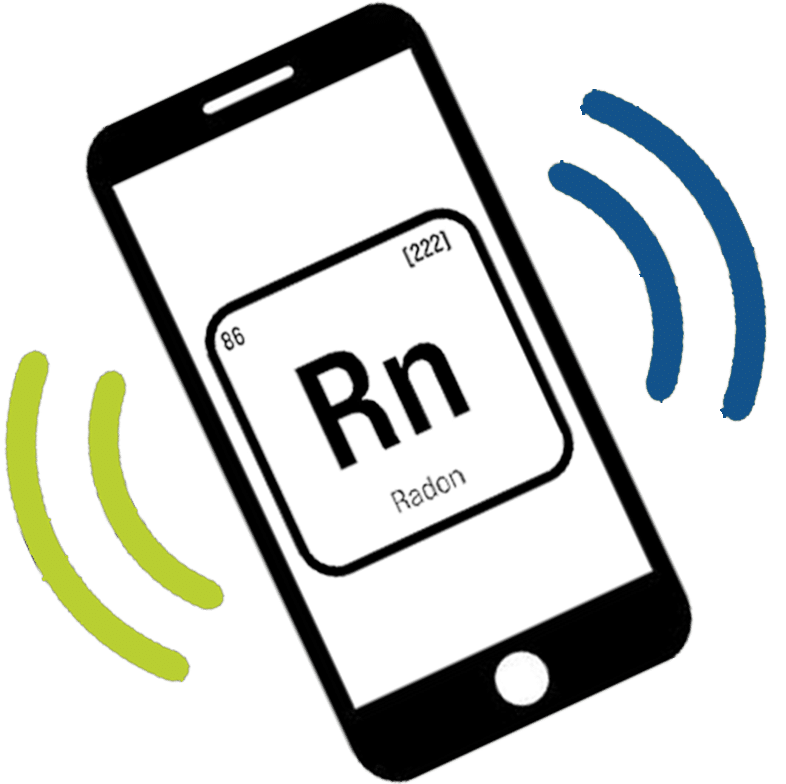Radon Mitigation Cost in Arizona
- Kaber Robinson

Radon is a naturally occurring radioactive gas formed by the breakdown of uranium in soil, rock, and water. It is tasteless, odorless, and invisible, making it impossible to detect without testing. Long-term exposure to radon is the second leading cause of lung cancer in the United States after smoking.
Certain regions in Arizona have elevated radon levels due to the unique composition of the soil and construction styles. Understanding the costs and options for radon mitigation in Arizona is critical to ensuring safe indoor air quality for your family.

What Is Radon?
Radon is a radioactive gas naturally released as uranium in the soil breaks down. It enters homes through foundation cracks, construction joints, and gaps around service pipes.
Sources of Radon in Arizona
| Source | Description |
|---|---|
| Soil and Rock | Uranium-rich soil releases radon, which can seep through foundation cracks. |
| Well Water | Radon particles may enter homes through contaminated groundwater. |
| Construction Materials | Rare, but some materials can release radon gas. |
Quick Tip: Arizona’s tightly sealed homes, designed for energy efficiency, can inadvertently trap radon indoors, increasing health risks. Kaber Robinson, Arizona Radon
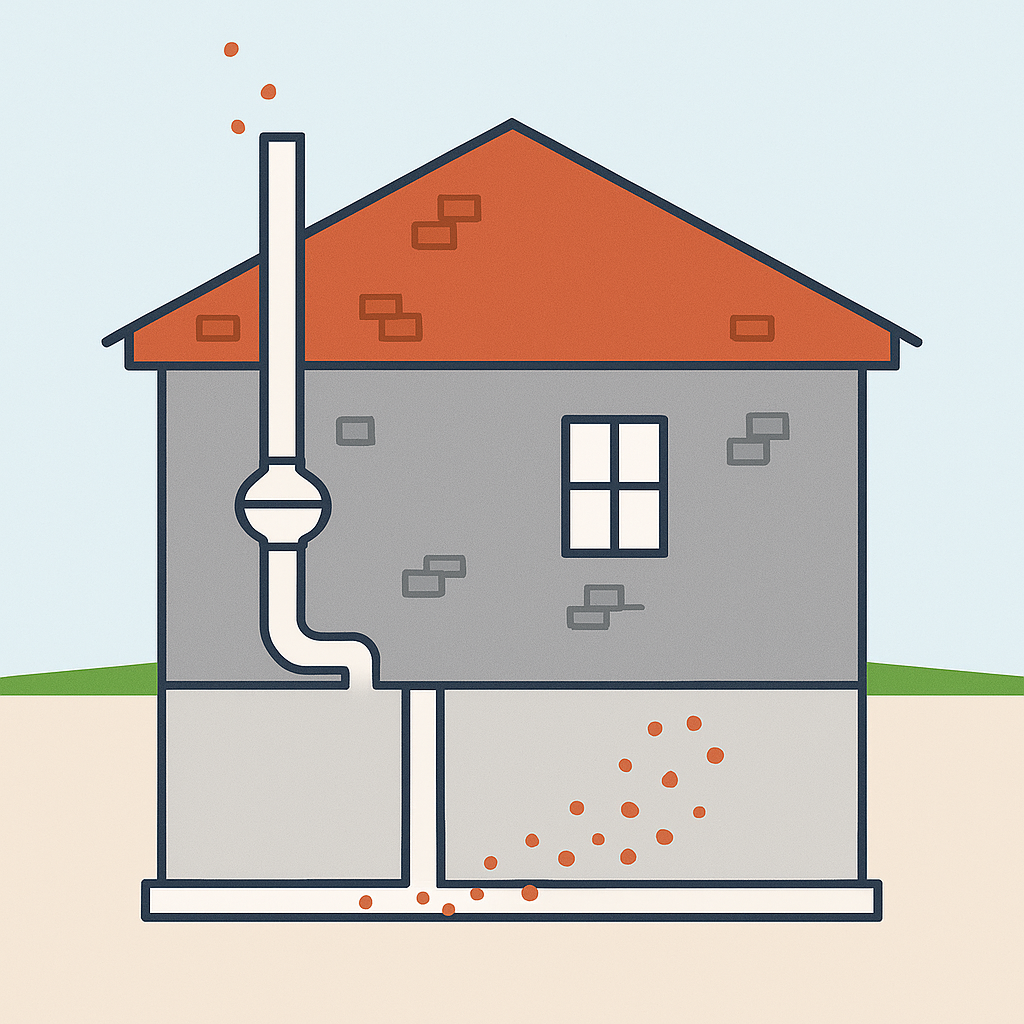
Average Costs for Radon Mitigation in Arizona
The average cost of a radon mitigation system is around $1,100 but can range from $800 to $5,000 depending on the type of system, home size, foundation type, and radon levels.
| Mitigation Type | Average Cost (Installed) |
|---|---|
| Lower-Level Pressurization | $500 – $1,000 |
| Passive Depressurization | $500 – $2,500 |
| Active Suction Systems | $800 – $2,500 |
| Ventilation (Fan-Assisted) | $800 – $2,500 |
| Water Treatment Systems | $2,500 – $4,000 |
| Basement Sealing | $3,000 – $5,000 |

Radon Levels in Arizona
Arizona’s average radon level is 1.9 pCi/L, lower than the EPA action level of 4.0 pCi/L. However, localized geology in northern Maricopa County, Prescott, and Flagstaff has led to higher readings in some homes.
Average Radon Levels by Area
| Region | Average Radon Levels (pCi/L) |
|---|---|
| Northern Arizona | 3.5 – 5.0 |
| Maricopa County | 2.0 – 4.0 |
| Southern Arizona | Below 2.0 |
Pro Tip: Regular testing is essential, as radon levels can vary significantly even between neighboring properties. Kaber Robinson, Arizona Radon
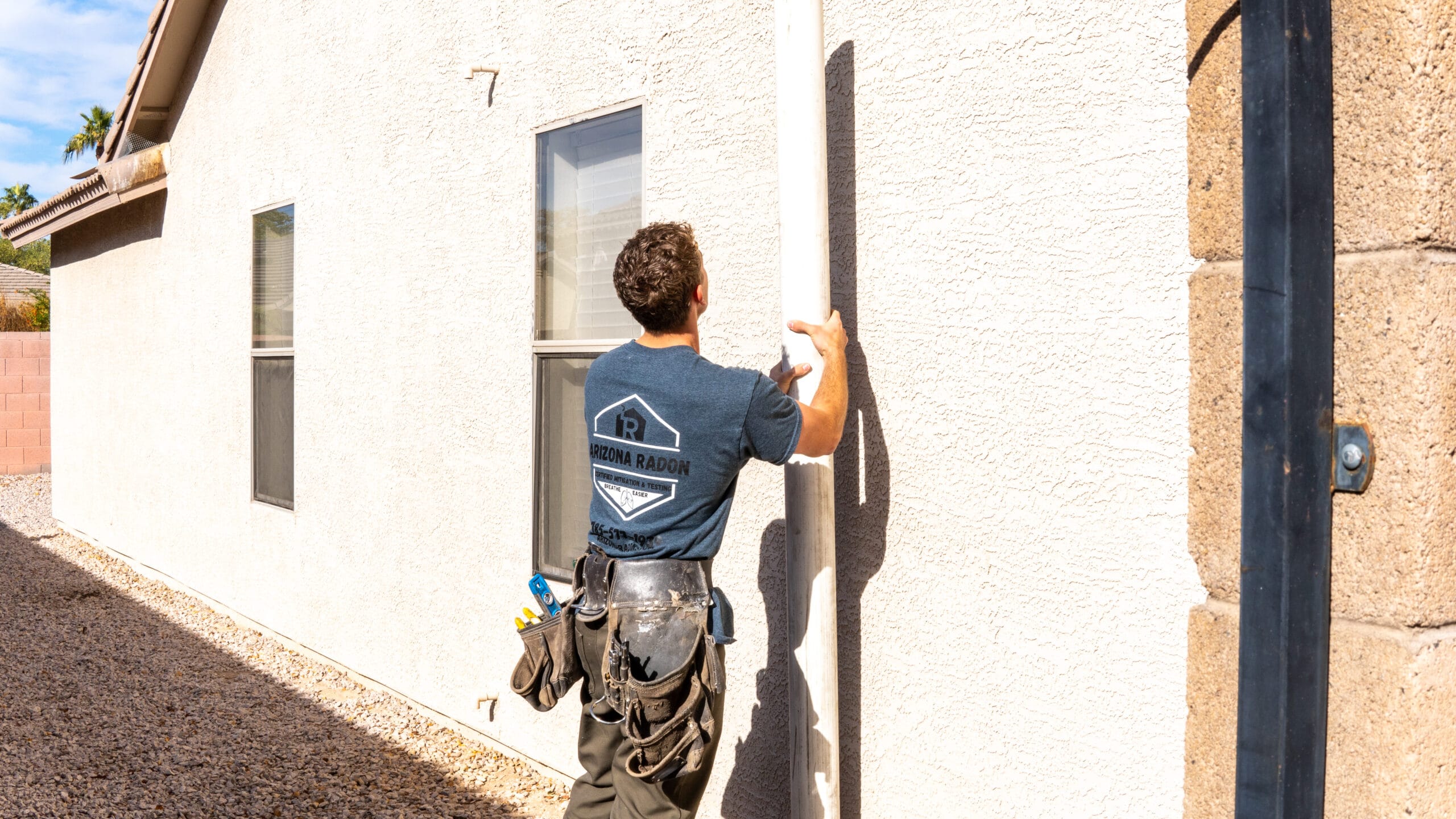
Radon Mitigation System Types
Radon mitigation systems reduce radon levels in your home. The system you choose depends on your home’s construction, radon levels, and budget.
| Mitigation Type | Description | Cost Range |
|---|---|---|
| Lower-Level Pressurization | Increases air pressure in the basement to prevent radon entry. | $500 – $1,000 |
| Passive Depressurization | Uses a pipe system to vent radon gas from beneath the foundation. | $500 – $2,500 |
| Active Suction Systems | A fan-assisted system that pulls radon gas out from under the home. | $800 – $2,500 |
| Fan-Assisted Ventilation | Combines active suction with fresh air ventilation. | $800 – $2,500 |
| Water Treatment Systems | Removes radon from well water using air stripping or charcoal filtration. | $2,500 – $4,000 |
| Basement Sealing | Seals cracks and applies radon barriers to reduce infiltration. | $3,000 – $5,000 |
How Arizona Homes Impact Mitigation Costs
Radon mitigation costs in Arizona are influenced by your home’s foundation type and construction. Some foundation types may require additional sealing or custom systems.
| Foundation Type | Required Action | Additional Cost |
|---|---|---|
| Slab-on-Grade | Depressurization or active suction | $500 – $2,500 |
| Basements | Active suction or ventilation | $800 – $2,500 |
| Crawl Spaces | Sealing and depressurization | $800 – $3,500 |
| Dirt Foundations | Sealing with plastic sheeting | $300 – $1,000 |
Did you happen to know? Homes built with energy-efficient, tightly sealed designs can inadvertently trap radon, increasing the need for proper mitigation. Kaber Robinson, Arizona Radon
Radon Health Effects
Prolonged radon exposure increases the risk of lung cancer. Radon is the leading cause of lung cancer among non-smokers and contributes to over 21,000 deaths annually in the U.S.
Health Risks
- Lung Cancer
- Respiratory Issues
- Genetic Damage
Even low radon levels (2.0 – 4.0 pCi/L) over time can pose significant health risks. Kaber Robinson, Arizona Radon
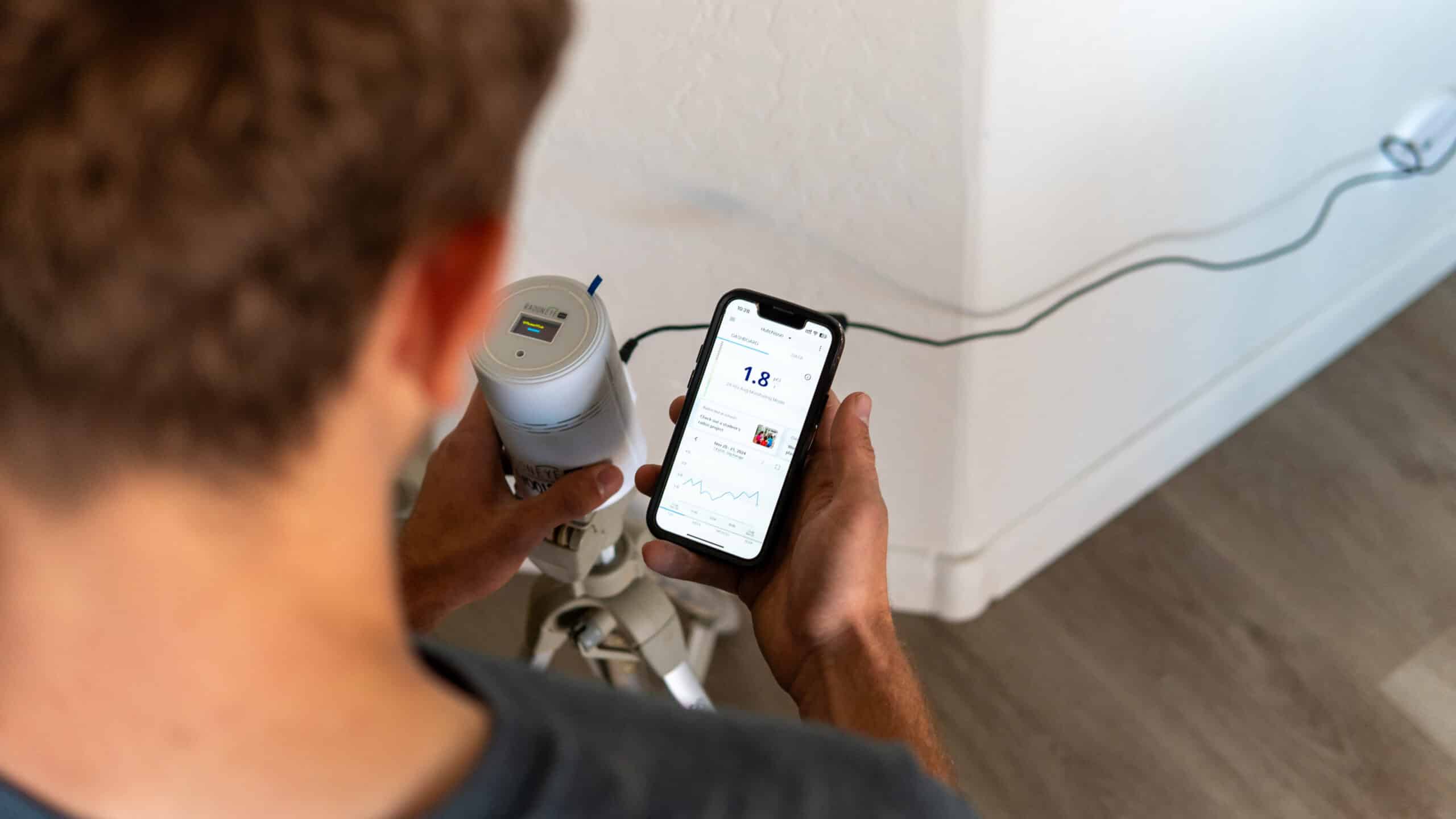
DIY vs. Professional Radon Mitigation
While DIY kits are cost-effective for short-term testing, professional mitigation and testing is necessary for long-term safety and accurate results.
| Option | Advantages | Disadvantages |
|---|---|---|
| DIY Kits | Affordable; Quick Results | Limited accuracy; No mitigation |
| Professional Testing | Accurate, Tailored solutions | Higher upfront costs; Requires expertise |
Additional Considerations and Costs
- Testing Frequency: Test every 2-5 years or after major home renovations.
- Travel Fees: Professionals may charge $50-$100 for travel.
- New Construction: Homes built after 2010 may include radon-resistant features.
- Ventilation Requirements: Homes with basements may need fan-assisted systems to improve air circulation.
Maintenance Tip: Radon fans typically cost $30 – $300 annually in energy costs. Regular maintenance ensures system longevity. Kaber Robinson, Arizona Radon
Conclusion
Radon mitigation in Arizona is an investment in your family’s health and safety. By understanding the costs, systems, and health implications, you can make informed decisions to protect your home. Contact Arizona Radon today for a free consultation and ensure peace of mind for years to come!
FAQs About Radon Mitigation in Arizona
1. What is radon, and why is it dangerous?
Radon is a naturally occurring radioactive gas that can seep into homes through cracks and gaps in the foundation. Long-term exposure to high radon levels increases the risk of lung cancer.
2. How do I know if my Arizona home has radon?
Testing is the only way to detect radon. You can use a DIY test kit or hire a professional for accurate results.
3. What is the average cost of radon mitigation in Arizona?
The average cost of a radon mitigation system is approximately $1,100, but it can range from $800 to $5,000 based on the system type, home size, foundation type, and radon levels.
4. What factors influence radon mitigation costs?
The cost depends on your home’s foundation type, radon levels, the complexity of the system, and additional requirements like permits or sealing.
5. How long does it take to install a radon mitigation system?
Most radon mitigation systems can be installed within one day, with follow-up testing to confirm effectiveness.
6. Do new homes in Arizona have radon-resistant features?
Many homes built after 2010 include radon-resistant construction, but testing is still recommended to ensure safety.
7. Is radon mitigation permanent?
Radon mitigation systems are effective in the long term if properly maintained. However, periodic testing is essential to ensure radon levels remain low.
8. Can I mitigate radon myself?
DIY testing is possible, but professional mitigation is recommended to ensure proper installation and long-term results.
9. What is the cost of testing for radon in Arizona?
Professional radon testing costs between $150 and $800, while DIY kits cost between $12 and $250.
10. Are there additional costs for radon mitigation in Arizona?
Additional costs may include permit fees ($25–$150), travel fees, sealing for dirt foundations ($300–$1,000), and re-testing after installation ($100–$400).
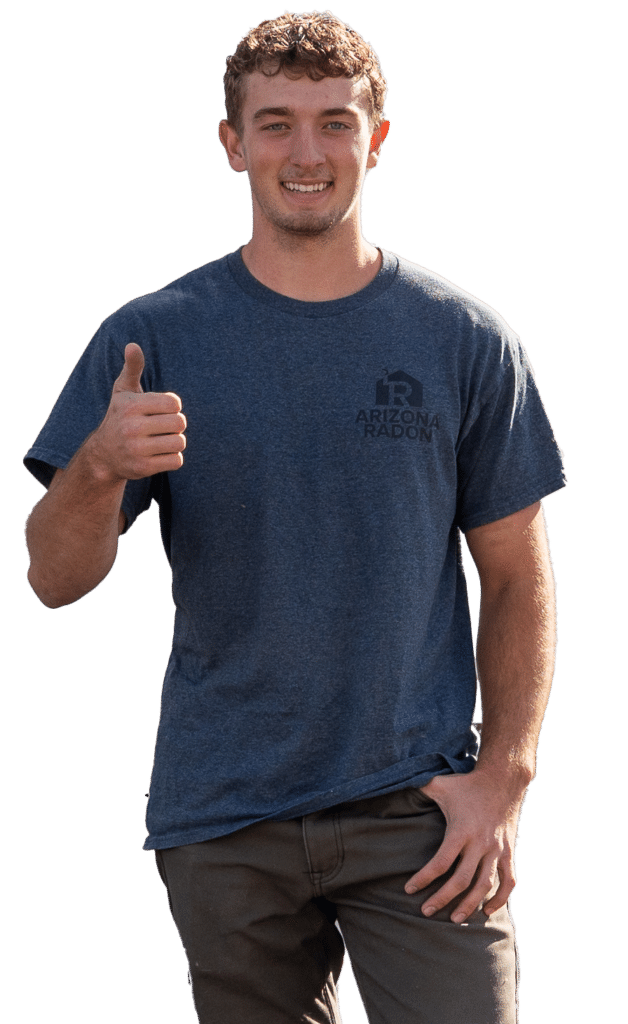
Bio:
Kaber Robinson, a second-generation radon mitigator and the founder of Arizona Radon, has accumulated 30 years of experience in the industry. A nationally certified radon measurement and mitigation professional, Kaber’s commitment to health and environmental sustainability led him to the radon field after graduating from a renowned technical college in Kansas.
Gaining invaluable experience with a leading radon mitigation company in the United States, he traveled extensively to install systems across various environments. Today, Kaber applies his extensive knowledge and practical skills at Arizona Radon, where he ensures that each project adheres to the strictest standards of quality and safety.


